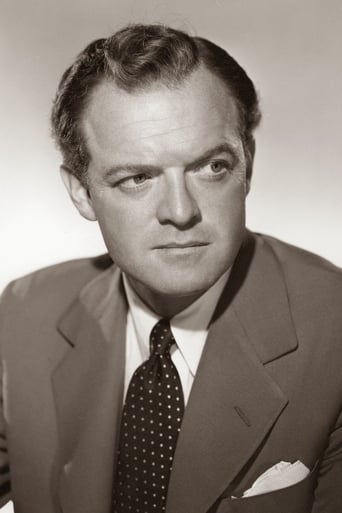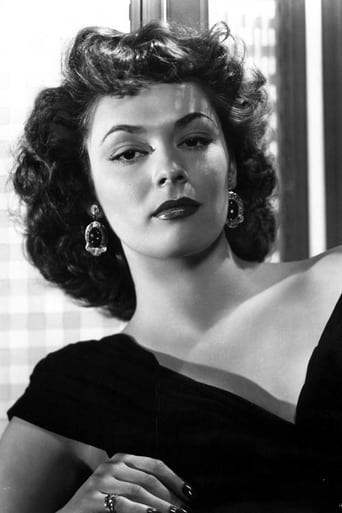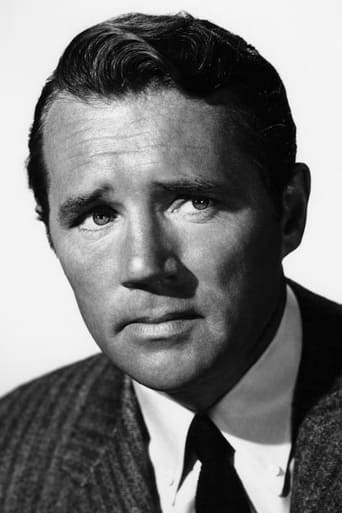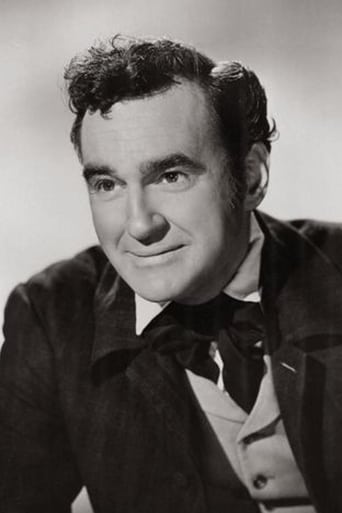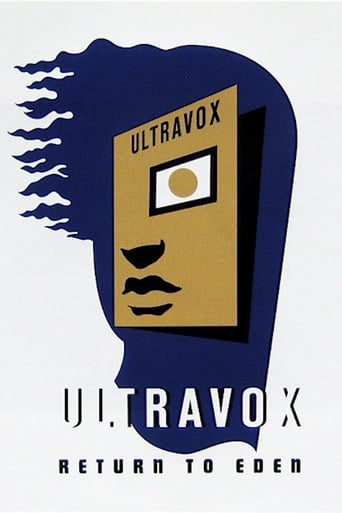AboveDeepBuggy
Some things I liked some I did not.
Titreenp
SERIOUSLY. This is what the crap Hollywood still puts out?
Stoutor
It's not great by any means, but it's a pretty good movie that didn't leave me filled with regret for investing time in it.
RipDelight
This is a tender, generous movie that likes its characters and presents them as real people, full of flaws and strengths.
weezeralfalfa
In 1903, John Gale(Van Heflin) has a timber concession in British East Africa. near the border with German East Africa (Tanganyka). but the Nukumbi natives have been on the warpath recently, raiding and killing whites. Reportedly, they were induced by a white man who was an escaped murderer: Abel McCracken(Jeff Morrow). Thus, Gale's present goal is to capture or kill this renegade, leading a safari to do so. During his travels, Gale comes across a prostrate white man with an arrow in his back. His said name is Dale Harder, and he is nursed back to health, and joins the safari, Soon, they come across a cabin being attacked by a small force of natives. They are soon scared off, leaving Peggy Marion(Ruth Roman) and 2 orphaned children. She says the natives killed the father, who was her brother. Reluctantly, they are added to the safari.During the trek, Dan occasionally argues with Gale about strategy or about how sure he is that McCracken was proved guilty. They encounter Gale's cabin on his timber concession, and find his partner dead. They take the hidden dynamite with them. Natives later attack the safari, but are driven off, mostly by Gale, who purposely merely wounds one, who he hopes will serve as a guide to McCracken. But during the night, Dan steals the captive and makes him lead him to McCracken. There, the 2 brothers renew their acquaintance, after a 9 year separation. But, Abel says he plans to continue inciting raids, and that his natives captured the 2 children, out looking for their runaway donkey.Dan returns to the safari, admitting that he is Abel's brother, but saying that he agrees that Abel needs to be captured or killed. Gale's plan is to use the dynamite they had scavenged to simulate a bunch of artillery near the village, using delay fuses, then set off the remaining dynamite within the village to simulate exploding artillery shells. I will end my review here.This is a short second feature Technicolor film, one of many adventure or western films produced by Universal during the late '40s and early-to- mid '50s. Since the credits don't mention any on site shooting, I assume the 'natives' were actually trained African Americans: a common ploy in African 'jungle' films during this period. They did an excellent job of standing in for the real thing, being much more convincing than the frequent use of Europeans as stand ins for Native Americans.See it at YouTube
bkoganbing
Very few Americans were in Kenya Colony in East Africa in 1903. So in casting the film Tanganyika Universal Studios cast not one of the major white roles in the film with anyone from the United Kingdom. It used to be that to explain an American presence and accent to say that they were Canadian. In fact Ruth Roman is mentioned as having taught school in Toronto. So I guess all the others Van Heflin, Howard Duff, and Jeff Morrow must have been Canadian too.In a plot that could have been from an American western, colonist Van Heflin is leading a safari that is an unofficial posse going after Jeff Morrow an escaped murderer who's been stirring up the natives though we never really learn why. On the way he meets up with Ruth Roman who is fending off an attack and she comes along with her young niece and nephew Noreen Corocoran and Gregory Marshall. Heflin also finds Howard Duff along the trail with a spear in him. Another rescue and some mending by Duff and there all on the trail of Morrow. Both Duff and Roman just want to get to some city like Nairobi but Heflin won't deviate from his objective.Just your average western set in Africa. One thing that intrigued me though. No mention is made of African location shooting. So if that was the case it was a remarkable job by Universal making it seem really in Africa. Fans of the principal cast members will like Tanganyika.
Brian Camp
Made in Hollywood by Universal Pictures, TANGANYIKA (1954) takes place in 1903 in the territory of East Africa (the future Kenya) with a crossover into Tanganyika (the future Tanzania). It involves a hunt for a fugitive white man who's stirred up the "Nukumbi" tribe of natives into making raids on white settlements and outposts. Directing the hunt is struggling lumber entrepreneur John Gale (Van Heflin) who leads a group of native porters from East Africa into Tanganyika. On the way he picks up Peggy Marion (Ruth Roman), a schoolteacher from Canada, and her young niece and nephew (Noreen Corcoran, Gregory Marshall), after rescuing them from a native attack that killed Peggy's brother. He also picks up a wounded white man, Dan Harder (Howard Duff) who, we learn early on, is the brother of the renegade white man, although he keeps that little fact a secret. Gale leads the party back to his lumber camp to drop off the whites only to find it plundered and his partner Duffy (Murray Alper) dead. So they all forge on into Tanganyika to locate the village where Abel McCracken (Jeff Morrow), the wanted white man, holds court and rules the natives' roost.This could easily have been a western, with rampaging Apaches substituting for the "Nukumbi," Apache scouts from the reservation standing in for the native porters, and a hardened Indian fighter in place of Heflin's white hunter. (And, believe me, Universal Pictures made plenty of westerns like it during the same period.) Certainly, director Andre De Toth had plenty of experience with westerns to have made it that way, but I guess he wanted to give a timeworn tale a bit of a new spin and see how well he could dress up the Universal Pictures backlot and certain Southern Californian locations to make them look like Africa. There's liberal use of trained animals in shots done in California, including a pair of donkeys, a leopard, a lion, a chimpanzee, and, in one awkward shot, an elephant laying down to simulate being shot. There is also actual African stock footage of alligators, hippos, and elephants. The California landscape shots are graced with plenty of matte paintings to make the locations look more African. The black American actors playing the Africans, in a cast with only seven whites in it, are uniformly dark and lean and actually look like they could pass for real Africans, which wasn't always the case with Hollywood-made films about Africa. Three of these actors are listed in the credits, Joe Comadore, Naaman Brown, and Edward C. Short. They're not given a lot to do, but they acquit themselves well in their brief moments and avoid revealing their American origins.The film is suspenseful for its first hour or so as the party makes its way into ever-more dangerous country and we see stealthy Nukumbi warriors watching from afar and stalking the safari. There is even a confrontation with the Nukumbi that leads to the capture of one of the warriors as a prisoner (Naaman Brown), who is ordered to lead them to McCracken's village. Things happen along the way to give the journey bits of adventure and the film moves at a steady, incident-packed pace. Tensions build among the whites as Gale increasingly resents being saddled with the others. At one point, Dan frees the Nukumbi prisoner and makes him take him to McCracken. He'd hoped to reason with his brother and learns, too late, just how that impossible that is. When Peggy's niece and nephew go searching for their stray donkey, they're abducted by the Nukumbi and held hostage by McCracken. This leads to a ludicrous final stretch in which Gale comes up with a far-fetched set of tactics to subdue the Nukumbi, despite their greater numbers, and rescue the children. I gave up suspending my disbelief.The best performance in the cast comes from Van Heflin, who has the most deeply-etched character, a restless type and man of action looking for a big score and hoping to settle down thereafter. He has the requisite Hawksian impatience with those who aren't "good enough" for the trip. (Coincidentally, Howard Hawks would make his own African adventure eight years later with HATARI!) Heflin's character belonged in a much better movie about Africa. Jeff Morrow plays an overwrought cardboard villain whose motives don't make much sense and whose hold over the natives is never adequately explained. Roman and Duff give serviceable performances, but don't have many layers to their characters. The black actors have no lines in English and we get no insight into their characters at all. While the film traffics in the usual "native" stereotypes found in this genre, they're somewhat less egregious here than in, say, the MGM Tarzan movies of the 1930s. And at least Heflin seems to show significant concern and respect for his men, particularly his chief aide, Andolo (Joe Comadore).Universal Pictures specialized in low-to-medium budget genre films during the early 1950s, including swashbucklers, westerns, Arabian Nights adventures, sci-fi, horror, musicals, and African adventures like this (see also CONGO CROSSING), which competed with the Tarzan films then being made at RKO and the Bomba the Jungle Boy movies then being made at Monogram Pictures. Universal's entries were at least in color.
MARIO GAUCI
An obscure jungle adventure that, while efficiently handled and good-looking enough to sustain interest throughout its trim running time, is let-down somewhat by a cliché-ridden script and lack of memorable incident. A second team cast – Van Heflin, Ruth Roman, Howard Duff and Jeff Morrow – does its best to liven up things in this story that seems partially inspired by Joseph Conrad's "Heart Of Darkness" – long after Orson Welles first abandoned his intention to film it and even longer before Francis Coppola made it his own in APOCALYPSE NOW (1979)! In fact, would-be lumber tycoon Heflin makes it his personal mission to rid the titular region of the nefarious Morrow who, taking it on the lam into the wild to beat a murder rap, eventually becomes the leader of a dreaded and bloodthirsty tribe of Africans that, among other things, are interfering with the smooth running of Heflin's operations. Along the way, the latter saves the lives of Duff (who is concealing a secret), Roman and her little charges and, true to formula, after the initial period of resentment, gets to befriend the first, fall in love with the second and risk his life to save the third when they go running after their runaway mule in the wild animal-infested jungle! The highlight of the film is the ingeniously explosive climax that is typically well-staged by seasoned action director De Toth.
